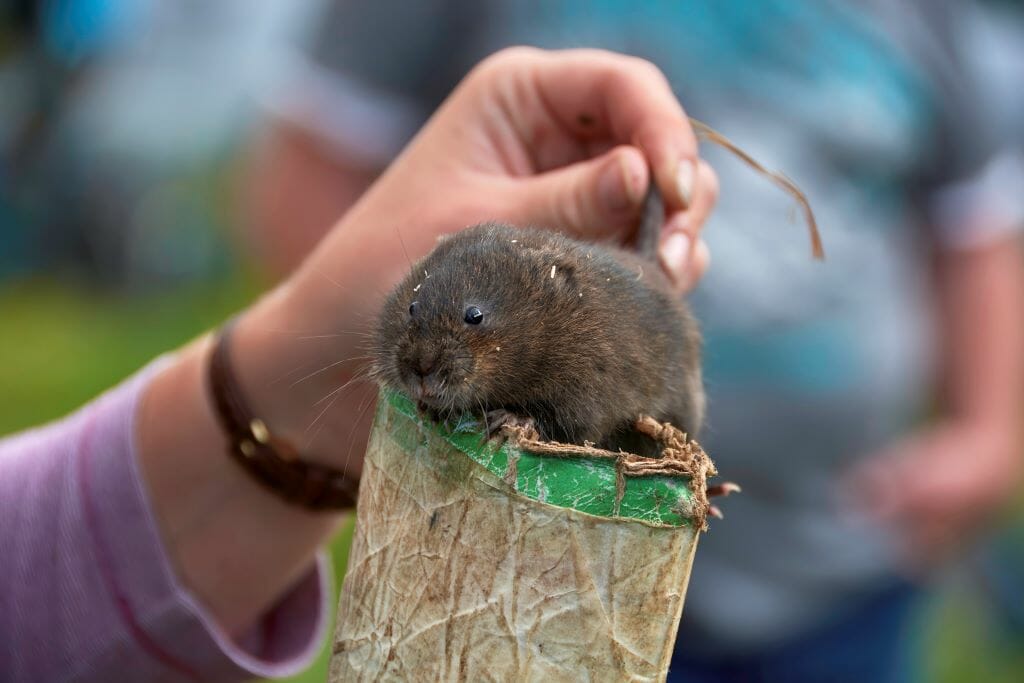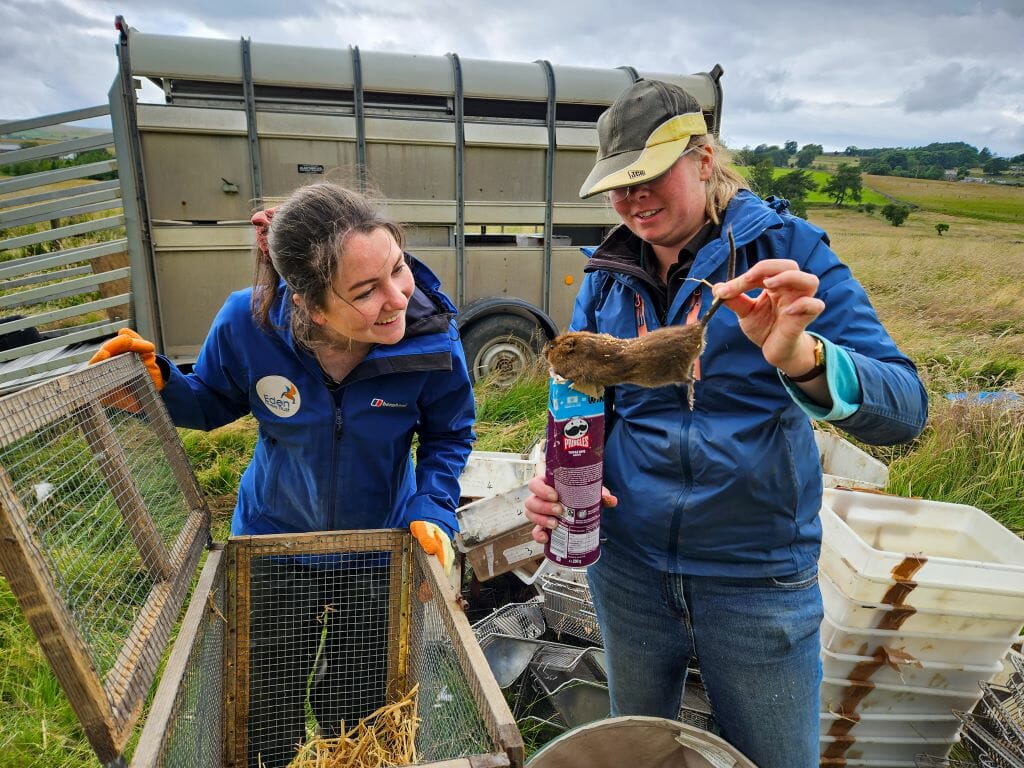
Hundreds of water voles have been reintroduced into the Lake District.
Once a common sight in the county’s rivers, the water vole has vanished from the area.
In a bid to re-establish this small, yet vital part of the ecosystem, environmental organisations and landowners joined forces to create the habitat conditions needed to bring back this much-loved creature to Cumbria.
This week, their hard work has been rewarded as the last of 365 water voles were released into their new homes.
Nationally, water voles are Britain’s fastest declining mammal. Over the last century they’ve gone from an estimated population of eight million to around 132,000. In that time, they have disappeared from 94 per cent of sites where they once lived, including the Lake District.
This week, 204 water voles were released at Haweswater, not long after 161 water voles were rehomed on the Lowther Estate.
It marked the end of the initial phase of the first re-introduction programme to take place in the National Park since they were virtually wiped out – mainly due to habitat loss, pollution and the devastation caused by the rapid spread of the water vole’s nemesis; invasive, non-native American mink.
Defenceless against the mink, whole colonies were swiftly decimated.
The threats had to be addressed before any animals could be reintroduced.

River conservation charity, Eden Rivers Trust was awarded money from the Environment Agency’s Water Environment Improvement Fund, The Moorhouse Fund and Ernest Cook Trust to work with landowners and volunteers to find suitable sites, make necessary improvements to habitats and take steps to control non-native predators ahead of this summer’s re-introduction.
The successful release of the water voles is a result of a partnership project between Eden Rivers Trust, the Environment Agency and the Cumbria Connect programme.
As a result of their efforts, water voles are now settling into their new homes on the Lowther Estate and at Haweswater, managed by the RSPB and United Utilities.
Dave Greaves, species and habitat officer at Eden Rivers Trust, said: “The conditions must be right to successfully re-introduce water voles and a wide range of partners have worked closely with us to get to this point. Firstly, Lowther Estates and the RSPB/United Utilities’ commitment to landscape-scale river restoration and habitat improvement projects has created the variety of river and wetland habitats needed for water voles to thrive.
“Secondly, control of invasive, non-native American mink had to be in place as they kill water voles and other native wildlife. Water voles didn’t co-evolve with American mink, and so lack strategies to avoid predation. We now have a more effective and efficient way of controlling mink – working with landowners and the local community so that the water voles stand a better chance of survival.
“Finally, more funding is now becoming available as nature recovery rises up the agenda of government and nature-friendly farming and land management is adopted.”
Eden Rivers Trust worked with water vole ecology specialists, Derek Gow Consultancy to find suitable sites and supply captive-bred voles that are closer to the genetic make-up of voles that would have once been more widespread in this part of Cumbria.
Bill Kenmir, conservation manager at Cumbria Connect, added: “This reintroduction of water voles to Cumbria marks a significant step forward in nature restoration of our landscape. Recognised as a keystone species due to their pivotal role, these charming creatures wield significant influence in delicately balanced ecosystems by engineering new habitats and increasing plant diversity along waterways.
“By adopting a landscape-scale approach and with further releases planned across the area, we hope to create a network of interconnected populations across restored floodplains. This will allow the water voles to disperse across more dynamic habitats, including alongside beaver at Lowther, allowing them to thrive.”
Jim Bliss, assistant estate manager, Lowther Estate, said: “Lowther is very excited to be part of a project that is reintroducing this adorable and much-loved species back to our northern landscape. For the first time in around 400 years, beavers and water voles can begin to live alongside each other in Cumbria.
“Beavers and water voles co-exist happily. The more dams created by beavers, the higher the water table. This in turn gives voles greater access to wider feeding areas. For their part, the voles, alongside their burrows, help the growth of a variety of wetland plant species – species that have previously been out-competed by monoculture. All this helps to create a diversity of soil structures which in turn brings in more diversity.”
“Lowther’s wider plan is to eradicate non-native invasive species and implement nature recovery across the estate. The water vole project is a key part of this strategy.”
David Morris, RSPB area manager for Cumbria, added: “We are thrilled to witness the water voles’ return to Haweswater, a testament to 12 years of dedicated landscape recovery in collaboration with our partner, United Utilities.
“Haweswater’s role in the esteemed Cumbrian River Restoration Programme, earning the European Riverprize 2022, reflects our commitment to reinstating natural river processes.
“Now, working more widely with our neighbours the Lowther Estate, we have created an environment where we can support the revival of this endangered species, establishing a population that can disperse across the wider landscape, contributing to a resilient ecosystem that benefits both nature and people.”































